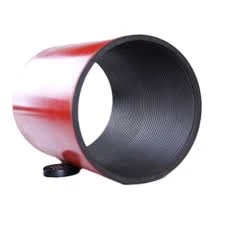- Afrikaans
- Albanian
- Amharic
- Arabic
- Armenian
- Azerbaijani
- Basque
- Belarusian
- Bengali
- Bosnian
- Bulgarian
- Catalan
- Cebuano
- Corsican
- Croatian
- Czech
- Danish
- Dutch
- English
- Esperanto
- Estonian
- Finnish
- French
- Frisian
- Galician
- Georgian
- German
- Greek
- Gujarati
- Haitian Creole
- hausa
- hawaiian
- Hebrew
- Hindi
- Miao
- Hungarian
- Icelandic
- igbo
- Indonesian
- irish
- Italian
- Japanese
- Javanese
- Kannada
- kazakh
- Khmer
- Rwandese
- Korean
- Kurdish
- Kyrgyz
- Lao
- Latin
- Latvian
- Lithuanian
- Luxembourgish
- Macedonian
- Malgashi
- Malay
- Malayalam
- Maltese
- Maori
- Marathi
- Mongolian
- Myanmar
- Nepali
- Norwegian
- Norwegian
- Occitan
- Pashto
- Persian
- Polish
- Portuguese
- Punjabi
- Romanian
- Russian
- Samoan
- Scottish Gaelic
- Serbian
- Sesotho
- Shona
- Sindhi
- Sinhala
- Slovak
- Slovenian
- Somali
- Spanish
- Sundanese
- Swahili
- Swedish
- Tagalog
- Tajik
- Tamil
- Tatar
- Telugu
- Thai
- Turkish
- Turkmen
- Ukrainian
- Urdu
- Uighur
- Uzbek
- Vietnamese
- Welsh
- Bantu
- Yiddish
- Yoruba
- Zulu
steel coupling
The Importance of Steel Couplings in Modern Engineering
In the realm of engineering, especially in mechanical and structural applications, the use of steel couplings cannot be overstated. Steel couplings serve as crucial components that connect two shafts, allowing for the transmission of torque while accommodating misalignment and vibration. Their durability, strength, and versatility make them indispensable in various sectors, including automotive, aerospace, manufacturing, and construction.
Types of Steel Couplings
Steel couplings come in different types, each designed to meet specific requirements. The most common types include rigid couplings, flexible couplings, and universal couplings.
1. Rigid Couplings These couplings provide a solid connection between two shafts, ensuring that there is no relative motion between them. They are typically used in applications where precise alignment is paramount, such as in precision machinery and high-speed applications. However, they do not allow for any misalignment, which can lead to wear or damage if there are deviations in shaft alignment.
2. Flexible Couplings Unlike rigid couplings, flexible couplings can accommodate some degree of misalignment and are ideal for applications where shafts may not be perfectly aligned. They are utilized in various scenarios, from engines to conveyor systems, where operational flexibility is essential. Materials used in flexible couplings can include metal and elastomer components that help absorb shock and vibration, prolonging the life of connected equipment.
3. Universal Couplings Also known as universal joints, these couplings allow for the transmission of rotary motion between shafts that are not in line with each other. This versatility makes them particularly useful in applications such as automotive driveshaft systems and robotic arms.
Applications of Steel Couplings
steel coupling

The applications of steel couplings are extensive, driven by their reliability and efficiency. In the manufacturing industry, they play a vital role in connecting machinery and ensuring seamless production processes. Steel couplings are also widely used in the automotive sector to connect drive shafts and ensure smooth power transmission between the engine and wheels. Furthermore, in the aerospace industry, where precision is critical, steel couplings are essential to connecting various flight control mechanisms.
In the construction sector, steel couplings are employed in various installations, from HVAC systems to large-scale machinery
. Their strength ensures that heavy machinery operates effectively, and their ability to withstand harsh environmental conditions makes them ideal for outdoor applications.Advantages of Steel Couplings
The primary advantage of steel couplings is their strength and durability. Steel's intrinsic properties allow couplings to endure heavy loads and resist wear over time. Additionally, steel couplings are capable of transferring significant amounts of torque, making them suitable for high-performance applications.
Another significant advantage is their versatility. With several materials and designs available, engineers can select tailor-made couplings that best fit the unique demands of their projects. Moreover, steel couplings are relatively easy to install and maintain, leading to reduced downtime and maintenance costs.
Conclusion
In conclusion, steel couplings are a foundational element in modern engineering applications. Their ability to provide strong, reliable, and flexible connections makes them critical to the smooth operation of machinery and equipment across a wide range of industries. As engineering challenges continue to evolve, so too will the designs and applications of steel couplings, ensuring their position as essential components in the engineering landscape. Whether it’s in precision machines or heavy industrial systems, the importance of steel couplings cannot be underestimated.
-
Tubing Pup Joints: Essential Components for Oil and Gas OperationsNewsJul.10,2025
-
Pup Joints: Essential Components for Reliable Drilling OperationsNewsJul.10,2025
-
Pipe Couplings: Connecting Your World EfficientlyNewsJul.10,2025
-
Mastering Oilfield Operations with Quality Tubing and CasingNewsJul.10,2025
-
High-Quality Casing Couplings for Every NeedNewsJul.10,2025
-
Boost Your Drilling Efficiency with Premium Crossover Tools & Seating NipplesNewsJul.10,2025







